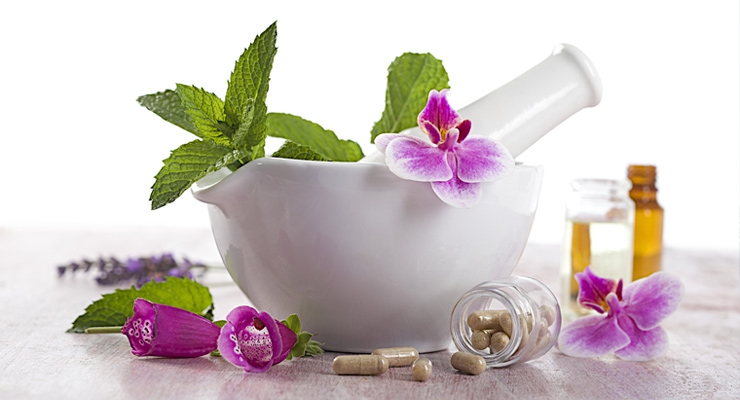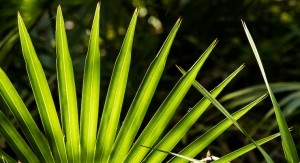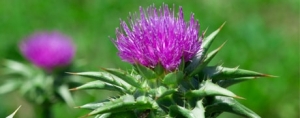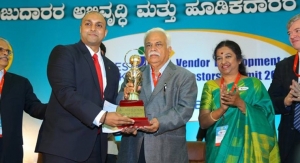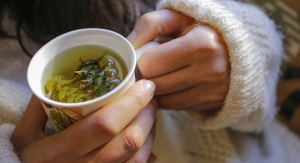By Dilip Ghosh, PhD, FACN, nutriConnect03.01.18
Herbal medicines are the most ancient form of health remedies known to humanity. Despite the great advances achieved in modern medicine, plants still make an important contribution to healthcare, and research has demonstrated that several herbal extracts are efficacious for specific conditions. Moreover, at least 120 distinct chemical substances derived from plants are considered important drugs currently in use, and several other drugs are simple synthetic modifications of natural products (Fabricant and Farnsworth, 2001).
Certain herbal medicines, because of the complexity of their chemical content and the variety of bioactivities, can provide the poly-pharmacology that orthodox drugs cannot deliver. However, all medicinal compounds are chemicals, whether synthesized in plants, animals, or in manufacturing laboratories. Therefore, all medicinal chemical compounds should be held accountable to similar standards of quality (identity, purity, and stability), clinical effectiveness, and safety. Irrespective of their source, “If it is found to be reasonably safe and effective, it will be accepted” (Angell and Kassirier, 1998).
Reliable and consistent quality is the basis of efficacy and safety of herbal medicinal products. Given the nature of products of plant origin, which are highly variable and complex products with numerous biologically active components rarely completely identified, therapeutic results and safety issues vary greatly from product to product, even within a single class. Therefore, the evidence of both benefits and risks is specific to the product tested and cannot necessarily be extrapolated to other products, as is the case for synthetically derived compounds.
For these reasons, and due to the inherent variability of the constituents of herbal products, it is generally difficult to establish quality control parameters and maintain consistent batch-to-batch quality; variation in the absence of reference standards for identification can start from the collection of raw materials and increase during storage and further processing.
Genesis
“The use of traditional medicines, phytotherapeuticals, and dietary supplements should be based on quality, safety, efficacy, and consistency (QSEC),” (Cordell, 2015). Traditional medicine was the only form of drug-based healing in many parts of the world prior to the introduction of aspirin in 1899.
Over time, more than 50,000 biologically active plants have been described around the world (IUCN, 2007). Food/dietary supplements and herbal medicine products are becoming a subject of increasing scrutiny and surveillance. Nowadays, the official regulatory agencies such as the Food and Drug Administration (FDA), European Medicines Agency (EMA), European Food Safety Authority (EFSA), Therapeutic Goods Administration (TGA), Health Canada, etc. have emphasized the importance quality assurance programs.
Wild-Collected vs. Cultivated Material
The quality of botanicals and herbal medicinal products can be linked to livelihoods of different value chains and sustainability (Booker and Heinrich, 2016). It is documented that many rural communities and indigenous groups, particularly in Asia, depend on medicinal plant collection for their livelihoods. The downside of this wild collection is that, as collected plants are depleted in the wild, their scarcity in the marketplace increases along with their economic value. Only an integrated chain using cultivated material may provide a better alternative to these models, but the major drawback is a significant increase in price of finished products at the retail level.
Due to the continuous increase of air and soil pollution, particularly in Asian countries, the level of pesticides, heavy metals, and residues are predominantly present in herbal extracts. Controlled, organically cultivated herbs may be the better option for cultivators. Again, organically cultivated material is typically more expensive than wild-collected material, especially when it is produced in more economically developed countries.
Due to the increasing high demand of herbal products globally, there is pressure to find more material that may lead to adulteration of the crop with similar species (e.g., as with Rhodiola species) or adulteration further down the value chain. There are also concerns by some orthodox consumers that cultivated material may be in some way inferior to wild-collected material, and subsequently the finished products are less appealing to these consumers.
Standardization & Seed-to-Patient Control
To minimize variation in finished botanical products, standardization of procedures should cover the entire field of study, from cultivation of medicinal plants to clinical application. Quality control and standardization of herbal medicines involve several steps that should start with the sourcing of high quality raw material and development of criteria for precise identification of the constituents of each product, together with documentation of the role of the constituent combinations.
Finally, it is necessary to establish efficacy through biological assays and determine an adverse effect profile through literature or from toxicological studies (both short-term and long-term) followed by controlled clinical trials, (Bauer and Tittel, 1996).
The lack of pharmacological and clinical data on most herbal medicinal products represents a major impediment to the acceptance of natural products by conventional medicine. In conducting a clinical trial, it is essential to identify the plant component clearly. Correct botanical identification is a first step. As a guidance tool, some experienced and tested approaches have been proposed to assist researchers in determining the quality and safety of plant material, (Zangara and Ghosh, 2014; Ghosh, 2016).
Extract & Finished Product Equivalence
The traceability of herbal raw materials for use in herbal medicines is essential to avoid the risk of adulteration and to deliver consistent quality in products to the consumer. The cultivation, production, and primary processing of the plant/herb has a direct impact on the quality of the active components. A robust quality assurance system for the collection, harvest, storage, and primary processing of the plant material is essential as a foundation to ensure consistent composition of the active compound.
In summary, “if the plant/herb starting material is not quality controlled and therefore not equivalent, or if the extract cannot be demonstrated as equivalent, or if the finished product cannot be demonstrated as equivalent, then the evidence used to support any efficacy claims can only be matched at the level of equivalence achieved (either plant or extract or finished product level),” (Anna Pohl, personal communication, 2017).
Conclusion
Quality issues of herbal medicines can be classified into two categories: external and internal (Zhang et al. 2012). External issues are contamination (e.g., toxic metals, pesticide residues, and microbes), adulteration, and misidentification, whereas complexity and non-uniformity of the ingredients in herbal medicines are the internal factors. The rigorous implementation of Good Agricultural Practices (GACP) and Good Manufacturing Practices (GMP) would undoubtedly reduce the risk of external issues. Internal issues can be managed using modern analytical methods and pharmaceutical techniques.
References
Dilip Ghosh, PhD, FACN
nutriConnect
Dilip Ghosh, PhD, FACN, is director of nutriConnect, based in Sydney, Australia. He is also professionally involved with Soho Flordis International, the University of Western Sydney, Australia, and is an Honorary Ambassador with the Global Harmonization Initiative (GHI). Dr. Ghosh received his PhD in biomedical science from University of Calcutta, India. He has been involved in drug-development (both synthetic and natural) and functional food research and development both in academic and industry domains. Dr. Ghosh has published more than 70 papers in peer-reviewed journals, and he has authored three recent books: “Biotechnology in Functional Foods and Nutraceuticals,” “Innovation in Healthy and Functional Foods,” and “Clinical Perspective of Functional Foods and Nutraceuticals” under CRC Press. His next book, “Pharmaceuticals to Nutraceuticals: A Shift in Disease Prevention,” is in press. He can be reached at dilipghosh@nutriconnect.com.au; www.nutriconnect.com.au.
Certain herbal medicines, because of the complexity of their chemical content and the variety of bioactivities, can provide the poly-pharmacology that orthodox drugs cannot deliver. However, all medicinal compounds are chemicals, whether synthesized in plants, animals, or in manufacturing laboratories. Therefore, all medicinal chemical compounds should be held accountable to similar standards of quality (identity, purity, and stability), clinical effectiveness, and safety. Irrespective of their source, “If it is found to be reasonably safe and effective, it will be accepted” (Angell and Kassirier, 1998).
Reliable and consistent quality is the basis of efficacy and safety of herbal medicinal products. Given the nature of products of plant origin, which are highly variable and complex products with numerous biologically active components rarely completely identified, therapeutic results and safety issues vary greatly from product to product, even within a single class. Therefore, the evidence of both benefits and risks is specific to the product tested and cannot necessarily be extrapolated to other products, as is the case for synthetically derived compounds.
For these reasons, and due to the inherent variability of the constituents of herbal products, it is generally difficult to establish quality control parameters and maintain consistent batch-to-batch quality; variation in the absence of reference standards for identification can start from the collection of raw materials and increase during storage and further processing.
Genesis
“The use of traditional medicines, phytotherapeuticals, and dietary supplements should be based on quality, safety, efficacy, and consistency (QSEC),” (Cordell, 2015). Traditional medicine was the only form of drug-based healing in many parts of the world prior to the introduction of aspirin in 1899.
Over time, more than 50,000 biologically active plants have been described around the world (IUCN, 2007). Food/dietary supplements and herbal medicine products are becoming a subject of increasing scrutiny and surveillance. Nowadays, the official regulatory agencies such as the Food and Drug Administration (FDA), European Medicines Agency (EMA), European Food Safety Authority (EFSA), Therapeutic Goods Administration (TGA), Health Canada, etc. have emphasized the importance quality assurance programs.
Wild-Collected vs. Cultivated Material
The quality of botanicals and herbal medicinal products can be linked to livelihoods of different value chains and sustainability (Booker and Heinrich, 2016). It is documented that many rural communities and indigenous groups, particularly in Asia, depend on medicinal plant collection for their livelihoods. The downside of this wild collection is that, as collected plants are depleted in the wild, their scarcity in the marketplace increases along with their economic value. Only an integrated chain using cultivated material may provide a better alternative to these models, but the major drawback is a significant increase in price of finished products at the retail level.
Due to the continuous increase of air and soil pollution, particularly in Asian countries, the level of pesticides, heavy metals, and residues are predominantly present in herbal extracts. Controlled, organically cultivated herbs may be the better option for cultivators. Again, organically cultivated material is typically more expensive than wild-collected material, especially when it is produced in more economically developed countries.
Due to the increasing high demand of herbal products globally, there is pressure to find more material that may lead to adulteration of the crop with similar species (e.g., as with Rhodiola species) or adulteration further down the value chain. There are also concerns by some orthodox consumers that cultivated material may be in some way inferior to wild-collected material, and subsequently the finished products are less appealing to these consumers.
Standardization & Seed-to-Patient Control
To minimize variation in finished botanical products, standardization of procedures should cover the entire field of study, from cultivation of medicinal plants to clinical application. Quality control and standardization of herbal medicines involve several steps that should start with the sourcing of high quality raw material and development of criteria for precise identification of the constituents of each product, together with documentation of the role of the constituent combinations.
Finally, it is necessary to establish efficacy through biological assays and determine an adverse effect profile through literature or from toxicological studies (both short-term and long-term) followed by controlled clinical trials, (Bauer and Tittel, 1996).
The lack of pharmacological and clinical data on most herbal medicinal products represents a major impediment to the acceptance of natural products by conventional medicine. In conducting a clinical trial, it is essential to identify the plant component clearly. Correct botanical identification is a first step. As a guidance tool, some experienced and tested approaches have been proposed to assist researchers in determining the quality and safety of plant material, (Zangara and Ghosh, 2014; Ghosh, 2016).
Extract & Finished Product Equivalence
The traceability of herbal raw materials for use in herbal medicines is essential to avoid the risk of adulteration and to deliver consistent quality in products to the consumer. The cultivation, production, and primary processing of the plant/herb has a direct impact on the quality of the active components. A robust quality assurance system for the collection, harvest, storage, and primary processing of the plant material is essential as a foundation to ensure consistent composition of the active compound.
In summary, “if the plant/herb starting material is not quality controlled and therefore not equivalent, or if the extract cannot be demonstrated as equivalent, or if the finished product cannot be demonstrated as equivalent, then the evidence used to support any efficacy claims can only be matched at the level of equivalence achieved (either plant or extract or finished product level),” (Anna Pohl, personal communication, 2017).
Conclusion
Quality issues of herbal medicines can be classified into two categories: external and internal (Zhang et al. 2012). External issues are contamination (e.g., toxic metals, pesticide residues, and microbes), adulteration, and misidentification, whereas complexity and non-uniformity of the ingredients in herbal medicines are the internal factors. The rigorous implementation of Good Agricultural Practices (GACP) and Good Manufacturing Practices (GMP) would undoubtedly reduce the risk of external issues. Internal issues can be managed using modern analytical methods and pharmaceutical techniques.
References
- Angell M, and Kassirier JP. 1998. Alternative medicine-the risks of untested and unregulated remedies. N. Engl. J. Med., 339: 839–841.
- Booker A, and Heinrich M. 2016. Value chains of botanicals and herbal medicinal products: A European perspective. Herbalgram, 112: 40-45.
- Bauer R, and Tittel G. 1996. Quality assessment of herbal preparations as a precondition of pharmacological and clinical studies. Phytomed., 2: 193–198.
- Cordell GA. 2015. Ecopharmacognosy and the responsibilities of natural product research to sustainability. Phytochem. Lett., 11: 332–346.
- Fabricant DS, and Farnsworth NR. 2001. The value of plants used in traditional medicine for drug discovery. Environ. Health Perspect., 109: 69–75.
- Ghosh D. 2016. Seed to patient in clinically proven natural medicines. In: Nutraceuticals: Efficacy, safety and toxicity, Ed. Gupta RC, Elsevier/Academic Press, 925-931.
- Zangara A, and Ghosh D. 2014. Role of Seed to Patient Model in Clinically Proven Natural Medicines. In: Clinical aspects of functional foods and nutraceuticals, Eds. Ghosh D, Konishi T and Bagchi D. CRC Press, Boca Raton, USA, 279-287.
- Zhang J, Wider B, Shang H, Li X, and Ernst E. 2012. Quality of herbal medicines: Challenges and solutions. Complement. Ther. Med., 20: 100—106.
Dilip Ghosh, PhD, FACN
nutriConnect
Dilip Ghosh, PhD, FACN, is director of nutriConnect, based in Sydney, Australia. He is also professionally involved with Soho Flordis International, the University of Western Sydney, Australia, and is an Honorary Ambassador with the Global Harmonization Initiative (GHI). Dr. Ghosh received his PhD in biomedical science from University of Calcutta, India. He has been involved in drug-development (both synthetic and natural) and functional food research and development both in academic and industry domains. Dr. Ghosh has published more than 70 papers in peer-reviewed journals, and he has authored three recent books: “Biotechnology in Functional Foods and Nutraceuticals,” “Innovation in Healthy and Functional Foods,” and “Clinical Perspective of Functional Foods and Nutraceuticals” under CRC Press. His next book, “Pharmaceuticals to Nutraceuticals: A Shift in Disease Prevention,” is in press. He can be reached at dilipghosh@nutriconnect.com.au; www.nutriconnect.com.au.

